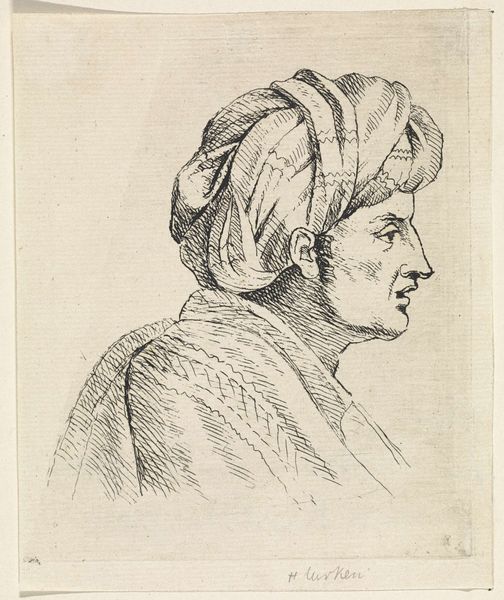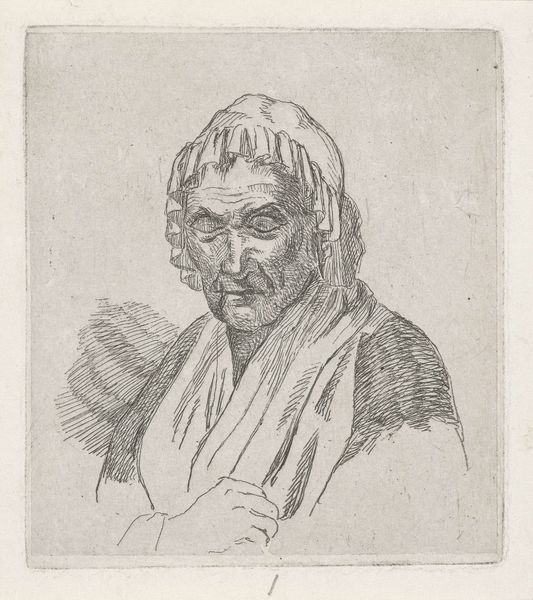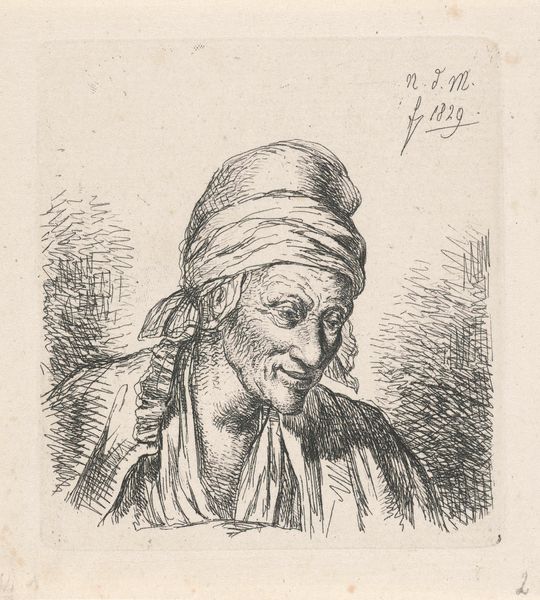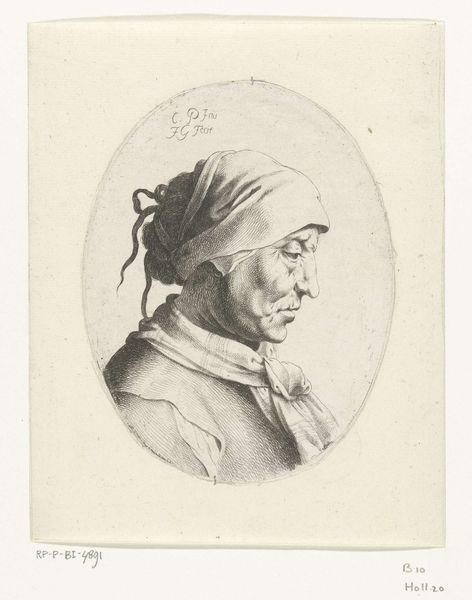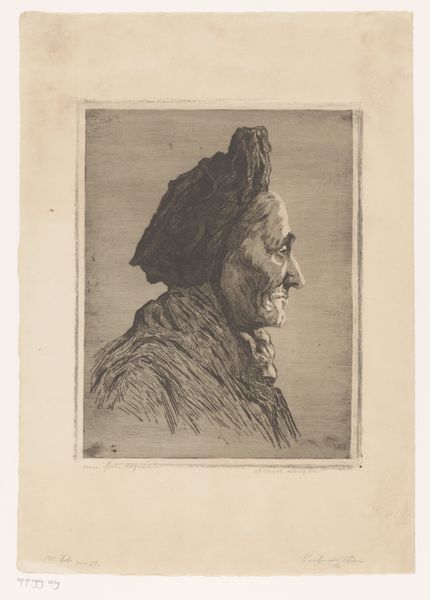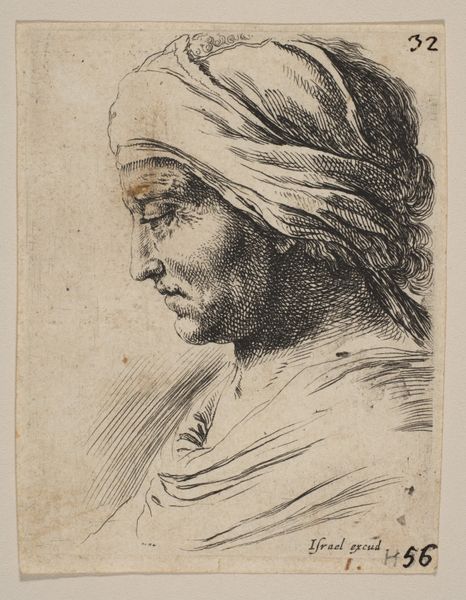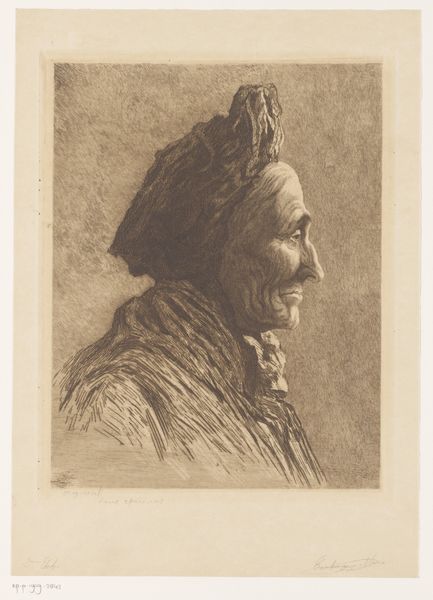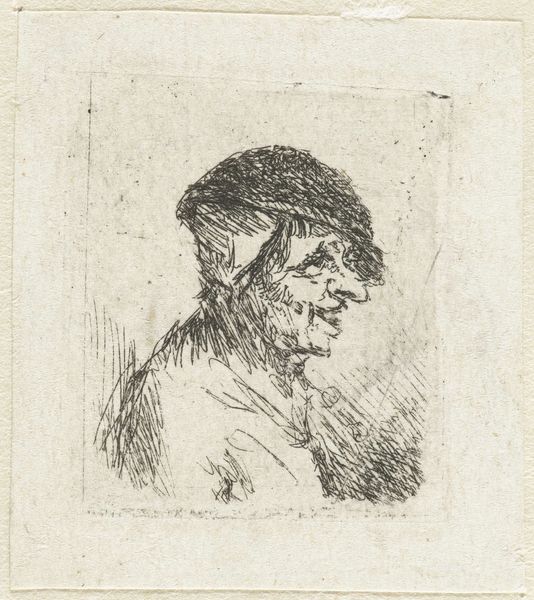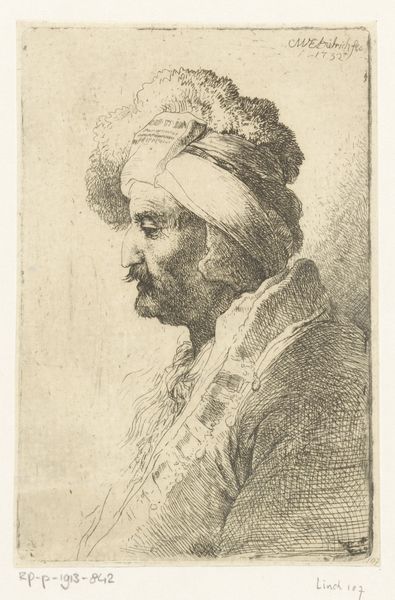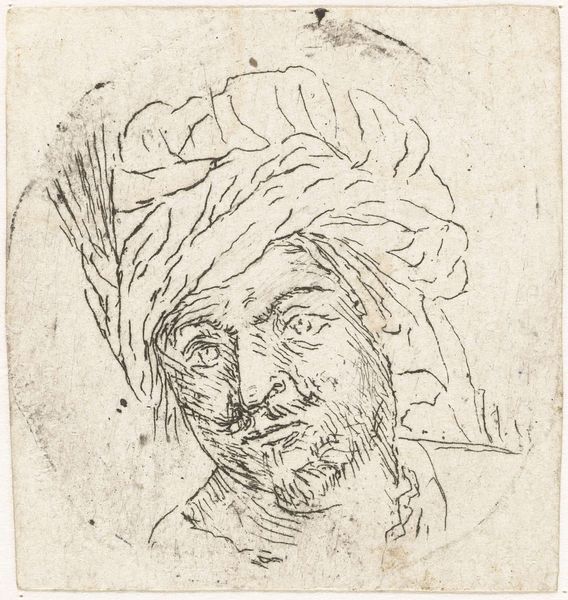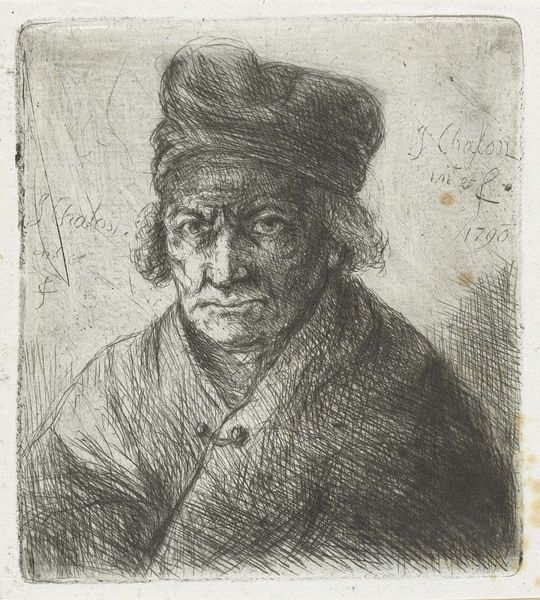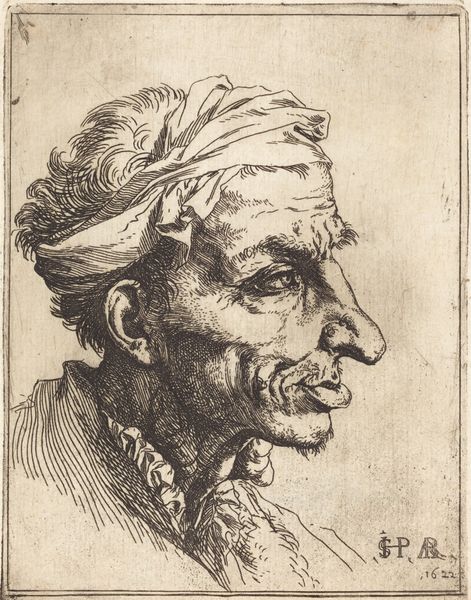
Dimensions: height 134 mm, width 108 mm
Copyright: Rijks Museum: Open Domain
Carl Friedrich Holtzmann made this etching "Portrait of an unknown man with a turban" sometime in the late 18th century. During this era, there was a surge of European artistic interest in the "Orient," often shaped by colonial encounters and the exoticization of non-Western cultures. This portrait, though seemingly of an individual, becomes a canvas for exploring the complexities of identity and representation. The turban, a marker of cultural or religious identity, raises questions about the sitter's background, and how Holtzmann perceived and portrayed him. Was it intended as an accurate representation or filtered through a Western lens? Through the expressiveness of the man's gaze and the texture of the etching, there's a tension between objectification and a more nuanced depiction of character. The work invites us to consider the power dynamics inherent in portraiture, and how cultural symbols can both reveal and conceal the individual. The ambiguity of the sitter's identity encourages viewers to contemplate our own assumptions and biases in interpreting images of people from different cultures.
Comments
No comments
Be the first to comment and join the conversation on the ultimate creative platform.
